
views
X
Trustworthy Source
PubMed Central
Journal archive from the U.S. National Institutes of Health
Go to source
We’ll show you a simplified at-home Panchakarma regimen, fill you in on what a more intense cleanse looks like, and offer an overview of the cleanse’s possible benefits and side effects
.
- Prepare for the cleanse by cutting dairy, meat, sugar, caffeine, and alcohol from your diet the week before, and incorporating ghee into your meals.
- Perform the cleanse by eating only bean curry at meals, increasing your ghee intake, meditating, and performing light exercise for 7 days.
- Give yourself daily oil massages, saunas or hot baths, and neti pot treatments to invigorate and balance your body.
Preparing for the Panchakarma Cleanse

Ask your doctor if a Panchakarma cleanse is right for you. Traditionally, these cleanses are done at retreats or in hospitals, with the supervision of medical professionals. They may have negative effects on your body, depending on your current health or medications. Always consult a doctor before starting any diet or cleanse. Also, a Panchakarma professional is able to diagnose your specific imbalance and tailor your treatment to your needs.

Stop eating dairy, meat, sugar, caffeine, and alcohol. Cut these from your diet in the week before the cleanse. These are said to burden your digestion. Many Panchakarma programs also eliminate raw vegetables and stick mainly to spiced basmati rice with mung daal, or a bean chowder, with plenty of ghee. Other regimens encourage eating plenty of greens during this week. Do whichever is comfortable for you, and always listen to your body’s needs. Fruit, eggs, oatmeal, and grains are all permitted during this week.
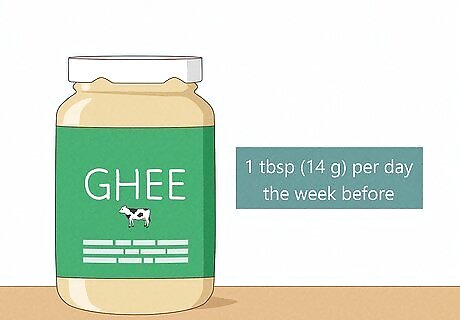
Eat 1 tbsp (14 g) of ghee per day the week before. Ghee, or clarified butter, is a staple in Panchakarma. It’s said to aid and cleanse the bowels, as well as soften skin. Others say it helps to bind and remove fat-soluble toxins from the body. Eat ghee by warming it and adding it to your coffee, spreading it on toast, or even taking it plain. This is also known as “oleation,” or ingesting healthy oils. Note that ghee is high in saturated fats and may be detrimental to heart health if eaten in large quantities.
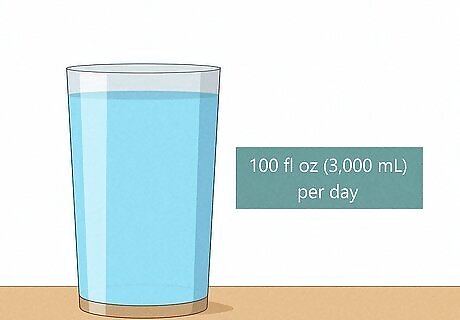
Drink about 100 fluid ounces (3,000 mL) of water per day. During the cleanse, your body sheds quite a bit of hydration, so it’s vital to drink plenty of water before, during, and after Panchakarma. Men should drink at least 125 fluid ounces (3,700 mL), and women at least 91 fluid ounces (2,700 mL). Keep a water bottle on hand, and eat plenty of hydrating foods like cucumbers, apples, celery, radishes, and tomatoes.
Performing a 7-Day Panchakarma Cleanse
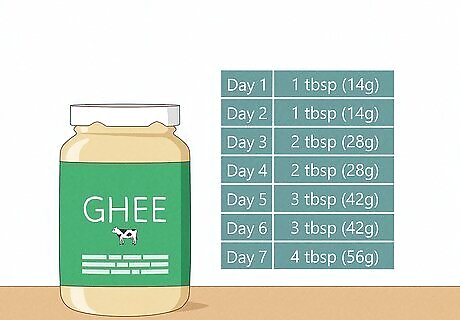
Eat increasing amounts of ghee each morning for 7 days. For an at-home cleanse, start each day by ingesting gradually increasing amounts of ghee, preferably on an empty stomach. Start with 1 tbsp (14 g) in the morning, then every 2 days add another 1 tbsp (14 g). Note that consuming large amounts of ghee may have diuretic properties, which are intentional during the cleanse, but should only be performed with a doctor’s approval. Alternatively, incorporate this total amount of ghee into your daily meals.
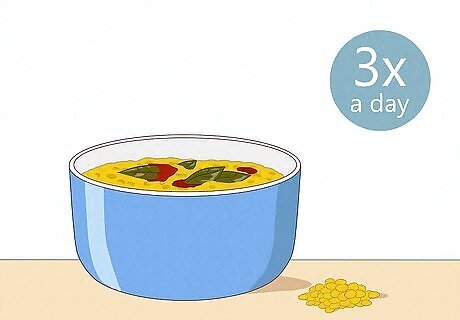
Eat a meal of mung daal 3 times a day. Mung daal, or mung bean curry, is the only meal most participants eat during their cleanse. Made with cooked mung beans, rice, and spices, it’s said to be a complete nutritional package that helps move along your digestion, aiding your Kapha dosha, or joint function. Some prefer to add things like radishes, parsnips, sweet potatoes, peas, carrots, ginger, onions, or various greens to their mung daal to make it heartier. Continue to avoid dairy, meat, sugar, caffeine, and alcohol during the cleanse. If you like, help yourself to fruit, vegetable, or grain-based snacks in between meals.
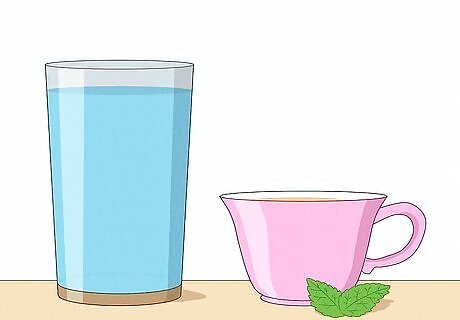
Stay hydrated, and drink herbal teas to promote immune health. As before, aim to drink about 100 fluid ounces (3,000 mL) of water a day to stay hydrated. Then, drink herbal teas like ginger, licorice, peppermint, or cinnamon to add an at-home herbal treatment to your Panachakarma. Also, be sure to get 7-8 hours of sleep each night! You’re pushing your body outside its comfort zone, so rest and recoup whenever possible.
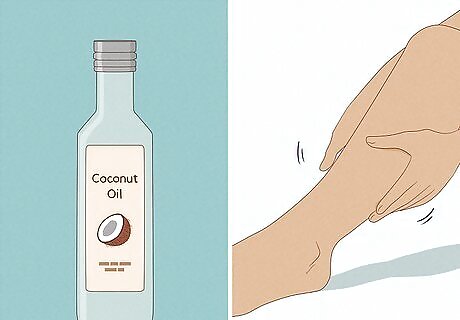
Massage yourself with oil once a day. Abhyanga, or oil massages, are said to help balance your Vata dosha, or your electrolyte balance and waste processes. Use coconut, avocado, or olive oil to massage yourself for 10-20 minutes, working your arms, legs, hands, feet, neck, and torso. “Dosha” in Ayurvedic traditions are similar to humors, or systems within your body responsible for managing certain processes.
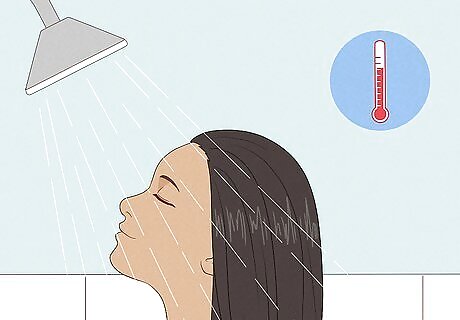
Take a sauna or hot bath or shower once a day. Your Pitta dosha is said to regulate your body temperature. Help cleanse your Pitta by taking a 5-minute sauna, or a 10-20 minute hot bath or shower after you have your oil massage. Also, use a neti pot before or after your sauna or bath to open up your respiratory system.
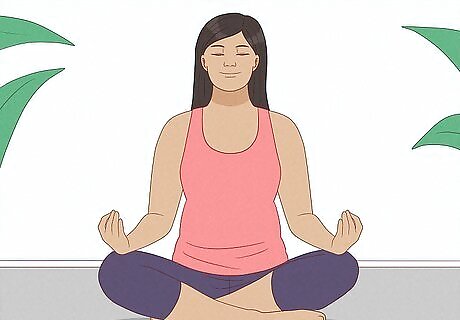
Meditate each day to keep your mind calm and sharp. Meditation is another staple activity during Panchakarma. Aim to meditate for 20-30 minutes each day in a dim, quiet room to relax and clear your mind. As you meditate, focus on feeling your bodily sensations. Feel air enter and exit your lungs as you breathe, and pay attention to each of your 5 senses. Also, self-reflect on your own emotions and spiritual well-being. Ask yourself: is something in your life bothering you? What obstacles are you hoping to overcome?
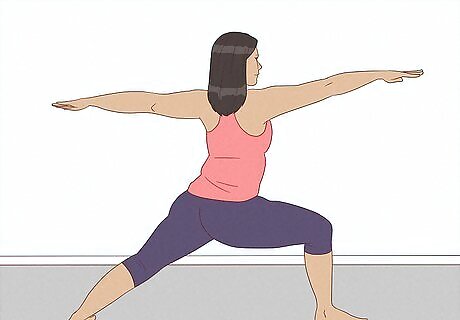
Practice daily yoga or other light exercises to stay limber. Panchakarma emphasizes stimulating your body and mind. Doing daily yoga for about 30-60 minutes keeps you in tune with your body during the cleanse, and also acts as a vital stress reliever. Or, go on a couple 10-minute walks throughout your day, or do another light exercise, like riding a bicycle or performing some stretches. Avoid heavy exercises like running or lifting weights during your Panchakarma. Remember that your metabolism is altered, so pay attention to your body and stop exercising if you feel light-headed or nauseous.

Spend time with friends to foster your sense of community. It may seem surprising, but community and connection are as vital to Panchakarma as the dietary aspects. Social interaction helps to sharpen your mind and bridge your mind to your body, so don’t hesitate to chat with and enjoy the company of those close to you, if you feel up to it.
After the Cleanse
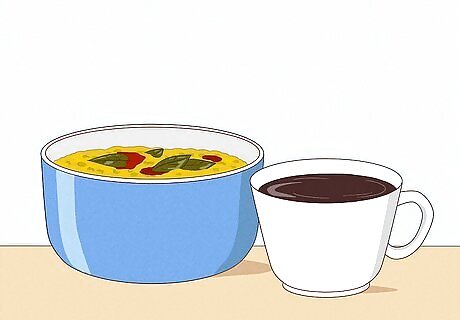
Reintroduce foods gradually to restore your metabolism. After a week of strict dieting, your digestion may be delicate. Add only one of the restricted foods (dairy, meat, sugar, caffeine, and alcohol) back to your diet each day to help ease your body back into its usual diet and function. For the next week, keep eating mung daal as your primary meals.
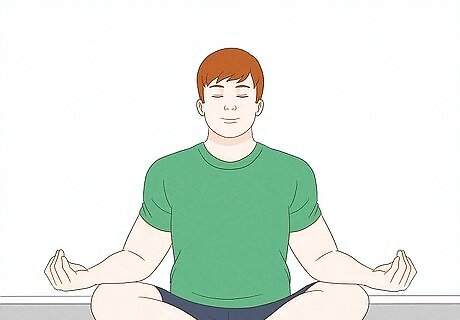
Continue to meditate and exercise to keep your healthy afterglow. Now that your Panchakarma is finished, keep up your healthy daily routines to maintain balance in your doshas. The cleanse is meant to help you long-term, so it’s vital to keep up your self-care routine to continue to reap the benefits. Keep a journal of how you feel, physically and mentally, after the cleanse. See if you can track your improvements over time!
What a Clinical Panchakarma Cleanse Looks Like
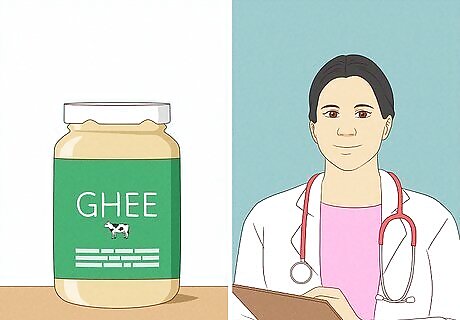
Stage 1: Poorva Karma Patients consume ghee and often meet with healthcare professionals to discuss and diagnose their imbalances and come up with a treatment plan. In addition, they may undergo the following: A steam bath to open up their respiratory system and loosen toxins. Consume medicated ghee, herbal supplements, or prescription drugs to ease their body into the new digestive cycle.
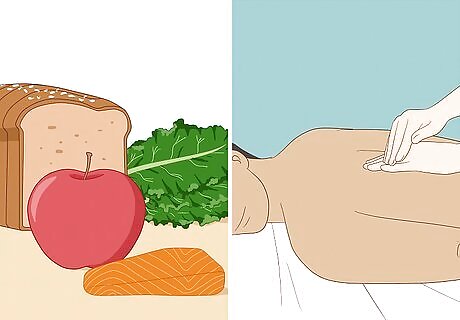
Stage 2: Pradhan Karma This is the bulk of Panchakarma. Patients start their full diets and receive massage treatments, yoga sessions, medication, and group discussions. They may also undergo more intense therapies meant to balance doshas and release toxins, like: Nasya, or medicated oils administered through the nose Vamana, or induced vomiting Virechana, or therapeutic purgation Basti, or enemas Rakta mokshana, or bloodletting
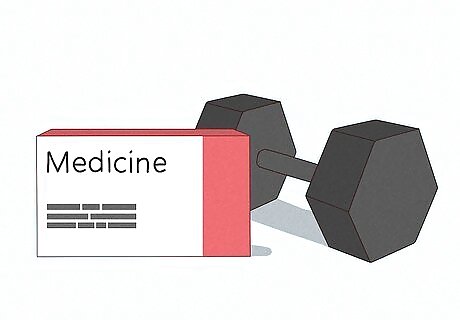
Stage 3: Paschaat Karma This is the aftercare phase, where patients return home with additional dietary regimens, lifestyle recommendations, or even medication. These help balance the doshas long-term. Note that clinical cleanses may last anywhere from a week to a month, depending on the patient’s needs.
Benefits
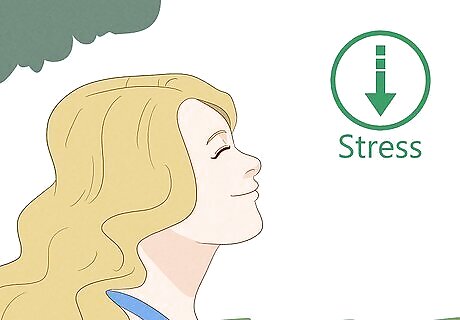
Panchakarma may reduce stress and promote healthier living. Clinical studies of Panchakarma are limited, so it’s hard to identify concrete benefits. That said, many patients report decreased anxiety, healthier dietary practices, and better overall quality of life. The cleanse also claims to: Detox your body. Increase resistance to disease. Increase spiritual and bodily harmony.
Side Effects
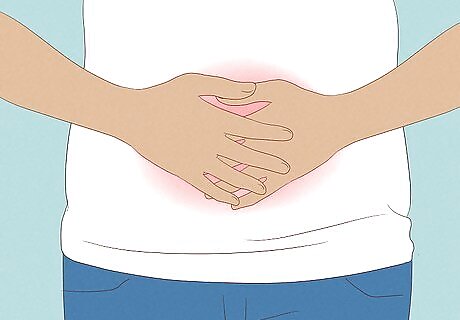
Panchakarma cleanses may cause upset stomachs, insomnia, and more. With a cleanse like this, you’ll feel worse before you see possible improvements. Many patients report stomach discomfort, trouble sleeping, and anxiety or irritability during the cleanse. You also may experience: Fatigue Headaches Congestion Depression



















Comments
0 comment